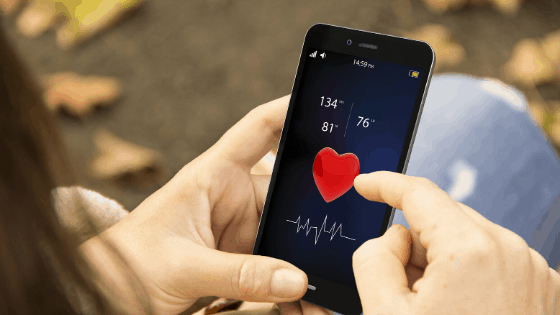
mHealth tools can increase patient engagement
There are now 318,000 mHealth apps available in the market, that number has nearly doubled since 2015 driven by increased smartphone adoption and ongoing heavy investment in the digital health market. The global mobile health (mHealth) app market was estimated at $28.5 billion dollars in 2018 and is expected to reach $102.35 billion dollars by 2023. Health-related mobile applications and technologies are often known as mHealth and manage patient experiences.
A survey conducted every year from 2017 to 2019 by Rock Health revealed that:
- 44% of the respondents tracked a health indicator using a digital tool in 2019, an increase from only 33% in 2017
- 56% of the respondents shared health tracking data with their physicians in 2019, in comparison to only 46% on 2017
This integration of patient-collected data into patient-provider discussions represents an opportunity to use mobile technology to increase patient engagement and patient empowerment.
The impact of digital tracking tools is the greatest when such tools drive a positive behavioural change, incentivising the user to change the habits that impact their health outcomes, such as in the case with mental illness. This is called a “trackable condition, ” a situation in which a person is diagnosed with a condition that improves by tracking and altering relevant behaviours such as sleep, exercise, mood and medication compliance.
Recent research conducted by McMaster University revealed that cognitive behavioural therapy that connected therapists and patients through such modes as web-based applications, video-conferencing, email and texting, improved patients’ symptoms better than face to face.
A different survey conducted by Technology Advice stated that patient engagement through mHealth tools is one of the defining trends in U.S. healthcare.
The survey disclosed that:
- 80% of patients say that digital services play an important role when choosing a physician
- 60% of patients feel it’s important for a physician to follow up with them after an appointment
- 80% of all patients would like to view their results and diagnosis online
Not surprisingly, 60% of millennials support the use of telehealth and 71% would like for their doctor to use mobile applications. However, young people are not the only ones embracing this type of technology. A senior health and technology survey revealed that over 90% of seniors have a health improvement goal and want to use mHealth tools to achieve it.
In spite of this growing trend, many healthcare providers have not yet fully embraced this technology, even though it is very important for patient engagement, and it is now seen as a vital part of the solution to solve many healthcare challenges. MHealth tools can help people self-manage their health and well-being, alert healthcare professionals in case of any changes in an individual’s condition, and support medication adherence. This technology also helps care providers deliver more efficient and cost-effective care. Now more than ever, healthcare authorities need to adopt new technologies to help meet these challenges and to keep up with their patients’ demands.
MHealth technology is here to stay, and healthcare providers can reap the benefits and build a better relationship with their patients sooner rather than later if they take the time to learn more about the different solutions available out there. For example, a good way of selecting an mHealth solution provider is by taking into consideration a manufacturer’s technical and clinical evaluation studies, randomised clinical trials. It is also important to look out for quality stamps such as CE Mark, ISO certifications and medical device certifications.
The Monsenso solution is a clinically-validated, CE Class I Marked mHealth solution classified as a Medical Device, consisting of a smartphone app for patients and web portal for healthcare providers that is widely used in the prevention and treatment of common behavioural disorders such as depression and anxiety. It can also be configured to prevent and treat severe mental illnesses such as bipolar disorder, borderline personality disorder, PTSD and schizophrenia. It is currently being used by over 1,000 patients across the globe and is highly valued by patients and healthcare providers.
References:
Mobile Health (mHealth) App Market – Industry Trends, Opportunities and Forecasts to 2023
Rock Health Survey 2017-2019
